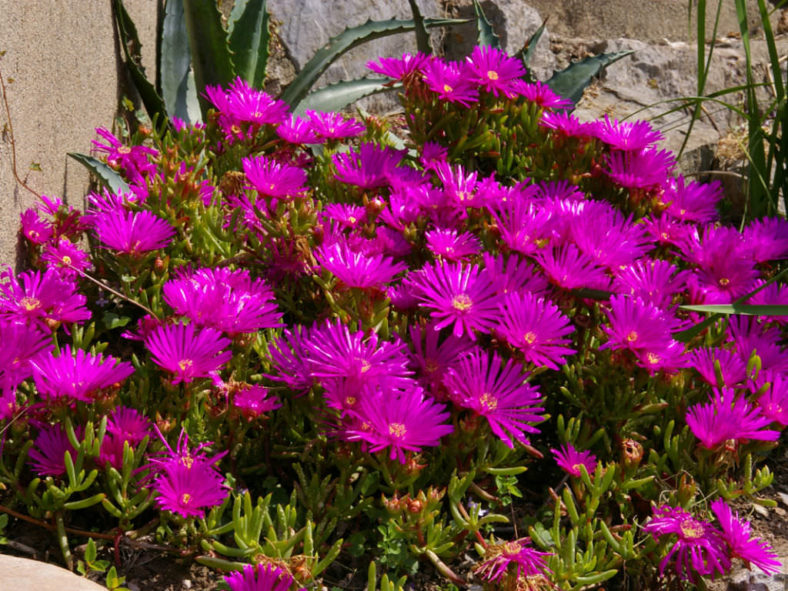Lampranthus is a relatively large genus comprising 100 to 150 species, native to South Africa. It provides some of the most spectacular, bright flowers from the succulent world and is widely used as ground cover, either as an annual or perennial, depending on the climate. Several species are used for landscaping and vary from shrubby to trailing. All the species tend to become woody as they age.
The generic name "Lampranthus" means "shining flowers" in Latin. The members of this genus have large, highly bright flowers of a range of colors (sometimes even bi-colored) that usually appear in summer and frequently cover the plants entirely. The species typically have long, smooth, elongated, succulent leaves. They can be triangular or cylindrical and appear in opposite pairs on the branches.
The spectacular flowers need full sun. As with most mesembs, they are followed by woody capsules that open when wet, ensuring the seeds are propagated at the best possible time.

Growing Conditions and General Care
Lampranthus plants are generally hardy in USDA Plant Hardiness Zones 8 through 11, but this varies depending on the specific species. They thrive in well-drained, poor soils and are suitable for soils with a sandy or rocky texture, although they will grow in almost any soil type. These plants are tolerant of salt exposure and thrive in coastal conditions.
Plant rooted cuttings in spring after the possibility of frost has passed. Space the cuttings 6 to 24 inches (15 to 60 cm) apart for trailing species, using closer spacing for quicker coverage. Dig a hole just a little larger than the roots at the cutting's base. Put the roots in the hole, cover them with soil, and tamp the soil firmly in place. For erect or mounding species, space them according to the mature dimensions of the particular species.
Water the plants immediately after planting, but let the top inch (2.5 cm) of soil dry before watering again. Water your plants in this manner through the first spring and summer they are in place. Once established, they are drought-tolerant and will need watering only during extended dry periods.
Lampranthus plants require full sun to prevent leggy growth and achieve optimal flowering. They do not need fertilizing, as this can cause overgrowth of softer, weaker branches. After plants flower, remove the old flowers and any developing fruit. Lampranthus is a short-lived perennial and may need replacement after several years.
For container plants, use a succulent potting mix. Containers need watering throughout the year whenever the top layer of soil dries out. Plants can grow almost year-round in mild climates. Prune as required at any time of year to maintain the plant's size. Bring containers indoors before the first frost is predicted.
Propagation
Propagation can be achieved by seed or cuttings. Seeds require warmth to germinate; a temperature of 60°F (16°C) or higher is recommended. Cuttings should be taken in summer. A 6-inch (15 cm) shoot stripped of bottom leaves and planted in moist sand should rapidly root.
Links
- Back to genus Lampranthus
- Succupedia: Browse succulents by Scientific Name, Common Name, Genus, Family, USDA Hardiness Zone, Origin, or cacti by Genus